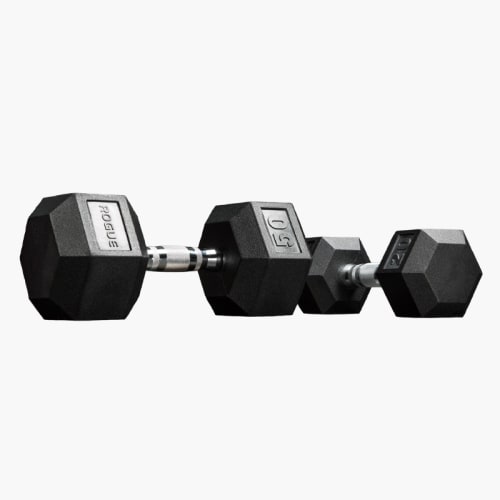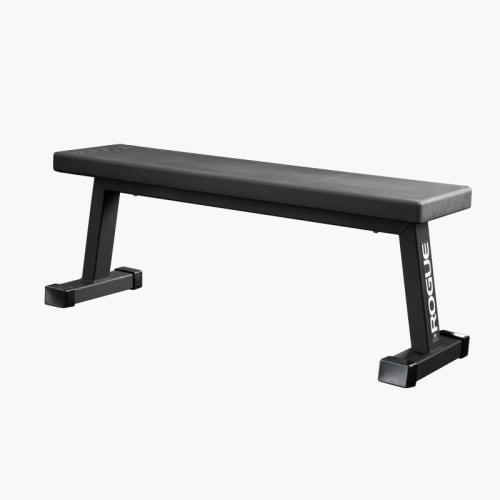Which Is More Effective: Pistol Squat vs Bulgarian Split Squat
Sometimes when we are selecting exercises to use in our training plans it can be difficult to see what the difference between certain exercises is. When we cannot accurately see the similarities and differences it becomes hard to make informed decisions about exercise selection. In this article I hope to provide you with the knowledge required to make informed decisions for your exercise selection between the pistol squat and Bulgarian split squat.
Get weekly roundups of the best training tools in your inbox, every Monday.
No spam – just thoughtful training advice
- What Is a Pistol Squat
- What Is a Bulgarian Split Squat
- What you’ll need to perform a Bulgarian Split Squat
- What Is Mobility
- How Are The Pistol Squat and Bulgarian Split Squat Similar
- Uni-Lateral Squats
- Advanced Exercises
- How Are The Pistol Squat and Bulgarian Split Squat Different
- The Pistol Requires A Lot More Mobility
- The Bulgarian Split Squat Can Be Loaded With Ease
- High Volume vs Low Volume
- The Pistol Squat Requires More Balance
- What Is Your Goal?
What Is a Pistol Squat
A pistol squat, as seen in the video above, is a squat performed on a single leg. This is an extremely challenging exercise for a great deal of individuals because of the challenges it poses to strength but also to mobility. The vast majority of people who go to the gym on a regular basis will have the strength metrics to perform this exercise as it doesn’t actually require us to be very strong to lift our bodyweight on one leg. However to express this strength in the pistol squat is an extremely difficult task, we need to have great levels of mobility in the hips and ankles. This is something which can take a while to obtain if we are not naturally mobile individuals. The pistol should only really be performed by advanced individuals who are attempting complex gymnastic exercises as a training pursuit in of itself. The pistol squat isn’t used for strength training or hypertrophy purposed, it is used to be proficient at the pistol squat.
What Is a Bulgarian Split Squat
The Bulgarian split squat is a lunge variation where one foot is raised to a bench while performing the lunge. This raising of the foot makes the exercise far more challenging than a traditional lunge as it requires both more stability but also means that throughout the lunge we pass through a longer range of motion. The Bulgarian split squat is much more similar to the classic lunge variation than the pistol squat as there remains two points of contact to create a somewhat stable base.
Buy Dumbbells ↗
What you’ll need to perform a Bulgarian Split Squat
What Is Mobility
Before we go further I want to explain what mobility is as it is one of the key differences between the two exercises. Mobility is the amount of active range of motion a joint has. By active range of motion I mean the range of motion can be controlled while performing strength (or other) exercises.
How Are The Pistol Squat and Bulgarian Split Squat Similar
Uni-Lateral Squats
The main similarity between these two exercises is that they are both single leg squat variations. This by no means makes them interchangeable in a training programme but it does mean that they use the same muscle groups and they both challenge balance.
Advanced Exercises
One main similarities between these two exercises is that they are both for similar populations. A beginner should never be using these two exercises as their uni-lateral variations as these exercise require good levels of balance, stability and strength.
How Are The Pistol Squat and Bulgarian Split Squat Different
The Pistol Requires A Lot More Mobility
The mobility (active range of motion) required to perform a pistol squat is a great deal more than the mobility required to perform a Bulgarian split squat. The Bulgarian split squat is not a movement that requires low levels of mobility, in fact it is one of the exercises in our movement library that requires a great deal of mobility. That reflects just how much mobility is required to perform a Pistol squat. The vast majority of athletic individuals who easily have the strength to perform a pistol squat but will be blocked by a lack of mobility either in the hips or ankles. This should influence your exercise selection, if you lack in mobility and are looking to gain muscle mass in your legs to increase your back squat then maybe the pistol squat isn’t for you right now. If you lack in mobility and are looking to improve single leg strength and hip mobility then maybe the pistol squat is the perfect exercise selection for you.
The Bulgarian Split Squat Can Be Loaded With Ease
Another key difference between the pistol squat and the bulgarian split squat is how they are loaded. The pistol squat is very very rarely performed with load and probably shouldn’t be other than extremely advanced individuals. Whereas the Bulgarian split squat can be loaded with DB’s, KB’s and barbells. This means that the Bulgarian split squat is far more effective at creating adaptations to strength and gains in muscle mass than the pistol squat. As stated above, it isn’t the level of strength required to perform a pistol squat that makes it challenging, it is the positional strength and mobility. This means that pistols are not very effective at creating strength improvements that will carry over to movement like back squat or front squats.
High Volume vs Low Volume
The Bulgarian split squat is also far more effective when it comes to hypertrophy training as it can be performed for high enough volumes that it creates hypertrophic adaptations. Whereas the pistol squat is very rarely performed for high number of repetitions (outside of CrossFit) and would never be considered in the context of a hypertrophy training plan.
The Pistol Squat Requires More Balance
The level of balance and stability required to perform a pistol squat is far greater than that of the Bulgarian split squat. This means that the stabilising muscles of the knees and ankles will be stimulated more during the pistol squat, although they will also work during the bulgarian split squat just to a lesser extent. If you are looking to improve these physical characteristics then the pistol squat will be an excellent exercise selection.
What Is Your Goal?
This is the most important question you need to ask yourself when picking exercises. The great part about this is that if your goal is just to have fun with your training and you want to learn the pistol squat then obviously you will pick the pistol squat. If however you are trying to increase the amount of muscle mass in your legs then the Bulgarian split squat is certainly the correct option. This is also the case if you are trying to increase the your powerlifting total, the pistol squat has no use case in your training programme and the obvious choice is the Bulgarian split squat.
The final decision about which is better really comes down to your training pursuit. Neither exercise is better than the other, it all just depends on the training goals you have.
If you enjoyed this resource you can find more below or try Programme, a fitness app that plans every workout for you – based on your progress, equipment and lifestyle.
This resource was written by Sean Klein. Sean Richard Klein has thousands of hours of coaching experience and a BSc in Sports Science with Management from Loughborough University. He owns a gym in Bayonne France, CrossFit Essor, which runs group classes and a Personal training studio.
Sean Klein



